|
|
Tornadoes
What are tornadoes?
A tornado is a violently rotating column of air usually produced by severe thunderstorms. In appearance they are generally funnel shaped, but may also have the likeness of a rope (skinny tornado) or wedge (very wide tornado). There can be several mini tornadoes circulating around a larger one. These are called multi vortex tornadoes and are usually violent. Some tornadoes form over water. These are called waterspouts. Most waterspouts form from high instability of growing convective clouds over water. Landspouts are similar to waterspouts as they are not associated with a thunderstorm mesocyclone.
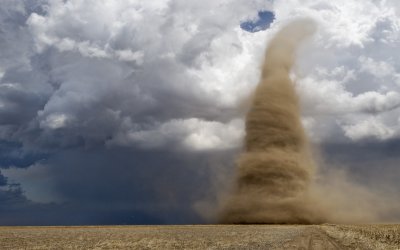 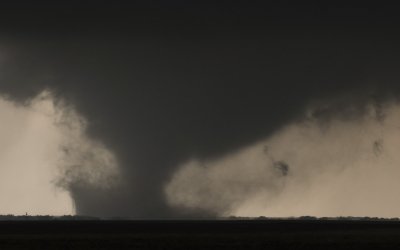 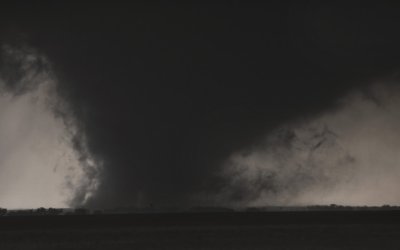
Tornadoes are measured by the Enhanced Fujita scale. This scale relates tornado wind speed estimates to the damage observed from the tornado. The scale ranges from zero to five with five being the strongest. The wind speeds are estimated three second wind gusts. Nearly 70% of all tornadoes are weak - EF 0 or EF 1. Tornado photographs courtesy of Jim Reed. jimreedphoto.com
Operational EF SCale (NOAA)
| EF Scale |
3 Second Gust (MPH) |
| 0 |
65-85 |
| 1 |
86-110 |
| 2 |
111-135 |
| 3 |
136-165 |
| 4 |
166-200 |
| 5 |
200+ |
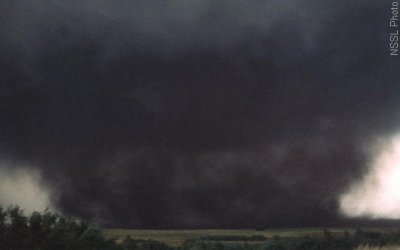 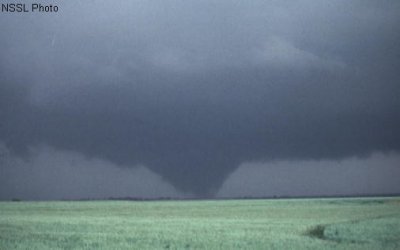 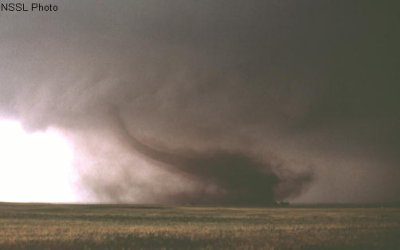
How do tornadoes form ?
Tornadoes form in generally strong wind shear conditons. This is observed as winds increase in speed and change direction moving clockwise(veer) with increasing altitude. Invisible horizontal tubes of spinning air are created by this process. As thunderstorms form, these tubes are tilted vertically. Thunderstorms start to rotate with diameters ranging from 2-6 miles. If the rotation is strong enough, a wall cloud develops. This is a cloud that rotates, hanging low under the updraft of the thunderstorm. If a burst of air drops from a nearby downdraft - called the rear flank downdraft - it may enter the strong updraft under the wall cloud. The column of air is stretched and a tornado can form. In addition, horizonally rotating tubes of air from the front flank of the storm also get wrapped into the larger vortex. The merging of vorticies likely play a very significant role in tornado formation. So tornadoes form from the ground up and from the mesocyclone downward. A great deal of study is focused on the relationship of the rear flank downdraft, forward flank, and wall cloud. The exact formative process of tornadoes is still being studied.
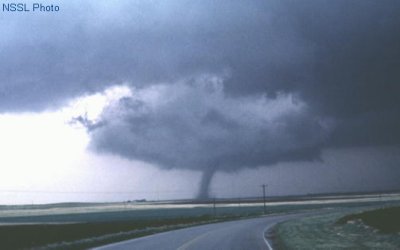 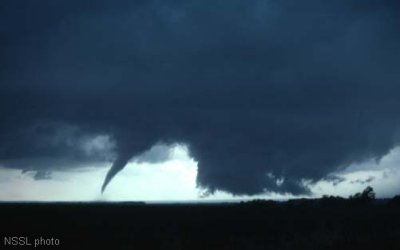 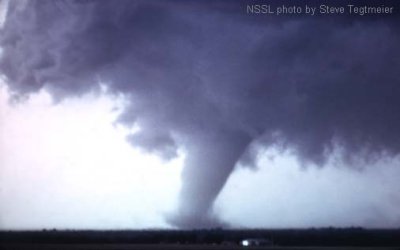
Where do tornadoes form?
Tornadoes have been observed on all continents except Antarctica. Outside of the United States, Argentina and Bangladesh have the next most occurances. Here in the United States central Florida and northeast Colorado have the highest occurance of all tornadoes. If only the significant tornadoes are considered (ef-2 or greater), then Oklahoma is the most likely location for formation. In general, the Great Plains and northern Gulf coastal states are where most significant tornadoes occur....Iowa southward to north Texas then eastward to Alabama.
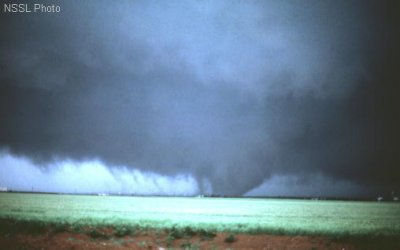 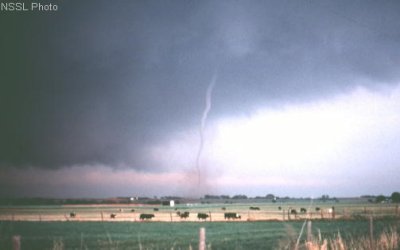 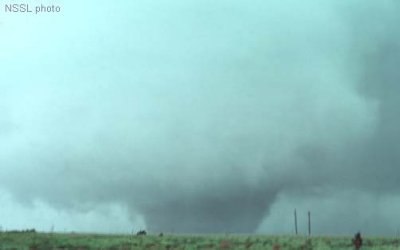
How fast do tornadoes move?
A tornado on average moves at speeds of about 30 mph, but can range from stationary to about 70 mph.
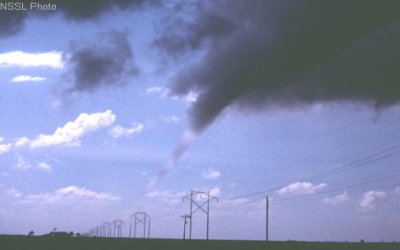 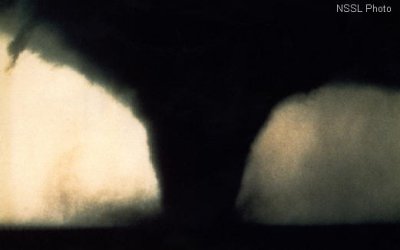 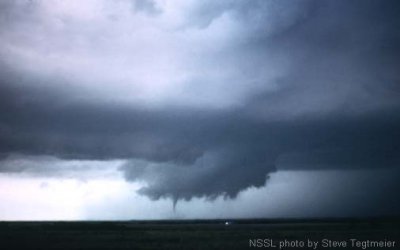
How many tornadoes occur each year?
On average about 1000 tornadoes are reported each year in the United States.
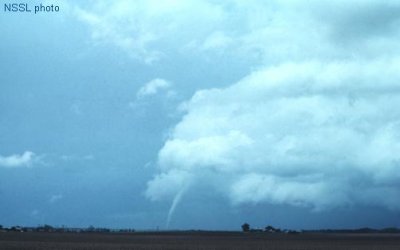 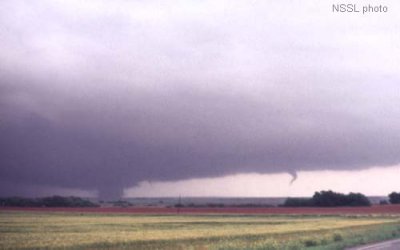 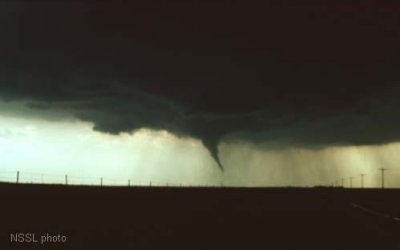
When do tornadoes form?
Tornadoes can form at any time of day, although the most common time is between 3pm and 9 pm. Spring and summer are the most common times of year for tornado formation. Generally speaking, spring tornadoes are more common in the south and summer tornadoes in the north as the jet stream lifts northward. The Great Plains experiences tornadoes during spring and summer.
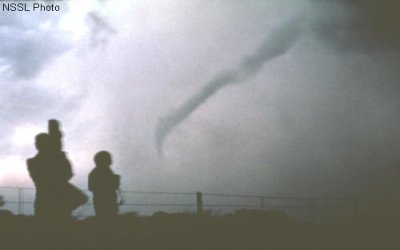 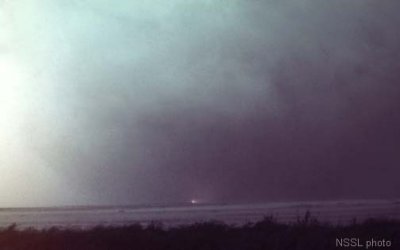 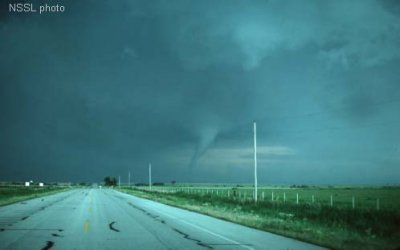
Tornado safety
It is very important to know the difference between a tornado warning and a tornado watch. Tornado Warning - A tornado has been sighted or a tornado signature appears on radar. Take cover immediately! Tornado Watch - Conditions are favorable for the formation of tornadoes. Stay vigilant. Go about your normal activites, but pay close attention to changing weather conditions. Have a place of safety close by.
Where is the best place to go when there is a tornado warning? If you are in your house, the basement under something sturdy. If you don't have a basement, the lowest floor of your house in a small room. A small room toward the middle of the house without a window is best. If at school, listen to your teacher's directions. The lowest level of the school in a hallway away from windows is a good place to seek cover. If you are in a car, go to a sturdy shelter. If none is available, find a ditch to lie in. Lie flat and cover your head. Get away from the car as it can be picked up and rolled or tossed by the wind. An underpass is not a good place to seek shelter. Winds can actually be stronger there. The only time to ever consider outrunning a tornado in a car would be in open country with a road leading away from the tornado.
Explore more types of weather. Unless otherwise noted, pictures courtesy of NSSL.
|
|
|